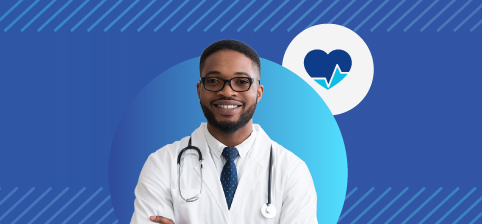In April, over 40,000 global health professionals converged in Chicago for the highly anticipated HIMSS23 Global Health Conference & Exhibition. Over the course of five days, healthcare, government and technology leaders discussed everything from wearable medical devices and artificial intelligence (AI) to cybersecurity and compliance. Here are some highlights and key themes from the conference.
- Change is happening quickly: The buzz around ChatGPT offers a perfect illustration of just how quickly AI has become part of our everyday lives. There are many applications for AI in the healthcare space as well. In procedure rooms, cameras with AI can ensure processes are being followed, and thereby helping avoid malpractice. One key question circulating at the conference was: how can regulations be put in place to protect patients and practitioners’ privacy as this new technology starts to be implemented?
-
 The cloud is here to stay: Underpinning many new technologies is the cloud. As more healthcare organizations use hybrid and multi-cloud environments, compliance becomes increasingly complicated and important. This is particularly true considering regulations and data protection laws are constantly changing. One benefit is there is a lot of overlap between compliance requirements. Looking for these common requirements (i.e. encrypting sensitive data) can help organizations navigate the seemingly complex world of compliance.
The cloud is here to stay: Underpinning many new technologies is the cloud. As more healthcare organizations use hybrid and multi-cloud environments, compliance becomes increasingly complicated and important. This is particularly true considering regulations and data protection laws are constantly changing. One benefit is there is a lot of overlap between compliance requirements. Looking for these common requirements (i.e. encrypting sensitive data) can help organizations navigate the seemingly complex world of compliance.
- Data presents a paradox: Data holds tremendous potential to transform healthcare operations, but the promise of data-informed decision-making must be balanced with both the data overload felt by those on the front lines, and the preservation of patient privacy. Electronic health records (EHRs) have made the lives of doctors and nurses easier in many ways, but they have also required workers to document much more granular information to meet regulation and reimbursement requirements. As such, many workers are skeptical of health IT’s ability to alleviate burnout. Integrating data into the culture of the organization is the best way to ensure everyone is capturing the proper data and maximizing new technology investments.
- Pursue interoperability: Not just having the data, but sharing that information is also crucial. By improving access to clinical data across institutions, we can discover new therapies, lower medical costs and improve patient care; however, interoperability also requires compliance and due diligence. At HIMSS23, panelists from the National Institute of Standards and Technology (NIST) described how next-generation database access control can facilitate data-sharing without moving large volumes of data. This promotes interoperability while preserving local protection policies. Additionally, panelists from the Centers for Medicare and Medicaid Services (CMS) emphasized the importance of Fast Healthcare Interoperability Resources (FHIR) standards.
- Care is expanding beyond hospital walls: Increasingly, wearable technology is becoming a staple of healthcare, as it can help with monitoring everything from glucose levels to physical activity, in addition to supporting weight control and disease prevention. More than anything, wearables offer the opportunity to continue patient care outside the walls of the hospital, which reduces the cost of care. The data collected by wearable technology holds tremendous potential for analysis at both a patient level and the population level.
- Cybersecurity must be top-of-mind: While wearables have many benefits, they must be used with cybersecurity in mind. A continuous glucose monitor that connects to the internet and patient portal, for example, could put all patient data at risk if the device is compromised. That’s why an Institute of Electrical Engineers (IEEE) working group has developed a framework with Trust, Identity, Privacy, Protection, Safety, Security principles (TIPPSS) for keeping devices with sensors safe. The goal is to make TIPPSS the standard for clinical Internet of Things (IoT) devices first, then for other solutions.
- Privacy: Patient privacy was also a leading theme at HIMSS23. When working with AI, algorithms must be trained on large volumes of data. At the conference, panelists discussed how healthcare providers and tech companies can balance using this protected health information (PHI) to improve AI while still adhering to privacy laws like HIPAA. Data de-identification is one approach to get the most out of large volumes of data while maintaining patient privacy.
Overall a common thread throughout HIMSS23 was balance. Healthcare providers and tech companies must balance the promises of technology with due diligence, while working in partnership to develop innovative solutions. From data standards to data privacy, it is crucial to collaborate with the government to lay the right foundation for using these cutting-edge technologies.
Visit our Healthcare Solutions Portfolio to learn more about HIMSS 2023 and how Carahsoft can support your organization’s healthcare technology goals and initiatives.
*The information contained in this blog has been written based off the thought-leadership discussions presented by speakers at HIMSS 2023.*








